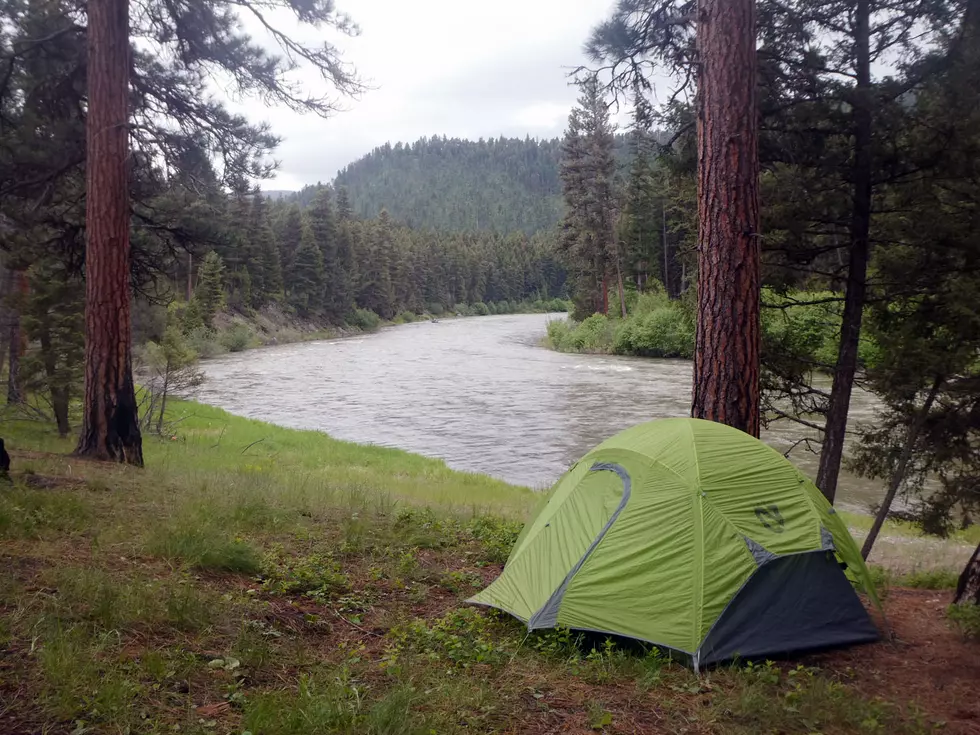
BLM allocates $26 million to three Montana restoration projects
Laura Lundquist
(Missoula Current) Restoration projects will get underway on three large landscapes in Montana in addition to others throughout the West, thanks to a new Bureau of Land Management program with dedicated federal funding.
On Wednesday, BLM Director Tracy Stone-Manning announced “Restoration Landscapes,” a new BLM effort across the 11 western states “to get people to work restoring America’s public lands.” The program is part of the Biden administration’s Investing in America agenda.
The funding was provided by Sen. Jon Tester's Inflation Reduction Act.
“There are only a few times that the leader of a federal bureau gets to announce a project that is not only foundational in nature but truly generational in change, something that will benefit Americans now and for decades to come,” Stone-Manning said during a press call. “Today’s announcement is a source of excitement, not just for the BLM, but for the countless people, partners and communities that are collaborators and benefactors across this broad effort.”
Restoration Landscapes identifies 21 large areas throughout the West where the BLM will dedicate a total of $161 million from the Inflation Reduction Act to various land restoration projects, from repairing watersheds on former timberlands and restoring wetland meadows to reducing invasive species that increase the wildfire risk for sagebrush ecosystems.
Montana is fortunate enough to contain three of the 21 landscapes. Just east of Missoula, the Blackfoot-Clark Fork landscape was allocated $9.54 million, while almost $10 million was allocated to the Missouri Headwaters region and $6.76 million was put toward an area north of the Missouri River and Fort Peck Reservoir dubbed “The Hi-Line Sagebrush Anchor.”
Tomer Hasson, BLM Senior Policy Advisor, said the BLM chose the 21 areas using four criteria. They wanted places where the money was certain to produce “real outcomes,” such as places where threats to valuable areas, such as wildfire, could be reduced and where restoration could best be achieved and endure into the future. They also needed to be areas where partners, such as tribes and local communities, would want to be involved.
Some Inflation Reduction Act money will be available for projects this year, but the majority of the funding will go out in 2024 and 2025, Hasson said.
Stone-Manning said the money is being funneled to state BLM offices that will look to local partnerships and collaboration to participate in effective restoration projects. Each project and investment will be landscape-specific. The money can be distributed either as matching grants to organizations and communities or the BLM can use the money to do work itself.
“We will lean on states, tribes and local communities to help us identify and implement projects and to solve problems on the ground,” Stone-Manning said.
Extending from north of the Blackfoot River down through the Sapphire Range, the 2.64 million acres of the Blackfoot-Clark Fork Landscape Restoration Landscape contains critical watersheds, popular recreation sites, and lands with tribal treaty rights and cultural significance. It’s also home to some iconic wildlife including elk, grizzly bears, Canada lynx and bull trout habitat, which have suffered the effects of former industrial logging and the growing pressures of human population and climate change.
The BLM manages about 165,000 acres of the Blackfoot-Clark Fork landscape. The Montana-Dakotas BLM State Office said projects here would likely include restoration in young to medium-age forests, decommissioning former logging roads and repairing perennial streams to preserve healthy forestland and wildlife habitat and ensure that tributaries continue to deliver clear, cold water to the Blackfoot and Clark Fork rivers.
"Our staff is excited about the opportunity this investment provides to make a meaningful impact on public lands in Montana" said Sonya Germann, BLM Montana-Dakotas director. "This will allow us to work with a variety of important partners to conduct major restoration efforts on three large landscapes we know are important to the residents of the Treasure State."
The Missouri Headwaters region is almost 6.5 million acres extending from the Big Hole River Valley over to the headwaters of the Gallatin River in Yellowstone National Park and up to the mouth of the Missouri River at Three Forks.
This landscape encompasses high-elevation mountain ranges, vast sagebrush steppe and wide river valleys that are home to elk, pronghorn antelope and native westslope cutthroat trout in addition to threatened species including grizzly bears, Arctic grayling, Greater sage grouse and whitebark pine. The BLM manages 937,644 acres within the designated boundary.
These are huge areas, but selected restoration projects won’t bar other land uses, Hasson said. The Restoration Landscape boundaries were drawn to encircle entire watersheds where work is needed, including lands owned by a variety of entities.
But the designation doesn’t alter BLM’s regional planning processes or hinder approval of applications for other uses. For example, the BLM Missoula Office is currently working on a plan for lands in the lower Blackfoot watershed, which sits within the Blackfoot-Clark Fork Restoration Landscape but could allow any number of uses.
The BLM will work with partners and private landowners within the Restoration Landscape boundaries to expand the scale and effectiveness of various projects being carried out on public lands.
“We chose these 21 restoration landscapes because we know how important they are and how much these places are in need,” Stone-Manning said. “We have a responsibility to ensure these places support local economies, healthy wildlife populations and allow for recreation and outdoor opportunities.”
Contact reporter Laura Lundquist at lundquist@missoulacurrent.com.
